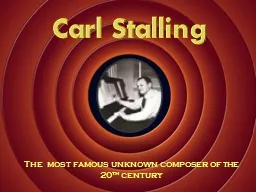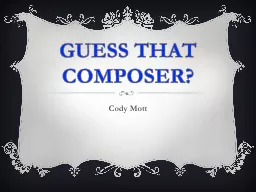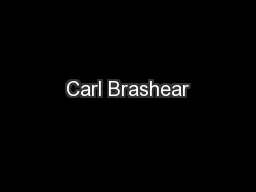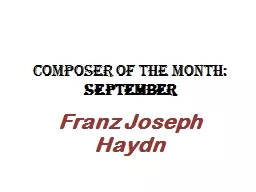PPT-Carl Stalling The most famous unknown composer of the 20
Author : calandra-battersby | Published Date : 2020-04-05
th century An American composer during the Golden Age of Animation Born Nov 10 th 1891 in Lexington Missouri Died Nov 29 th 1972 near Los Angeles California He was
Presentation Embed Code
Download Presentation
Download Presentation The PPT/PDF document " Carl Stalling The most famous unknown ..." is the property of its rightful owner. Permission is granted to download and print the materials on this website for personal, non-commercial use only, and to display it on your personal computer provided you do not modify the materials and that you retain all copyright notices contained in the materials. By downloading content from our website, you accept the terms of this agreement.
Carl Stalling The most famous unknown composer of the 20: Transcript
Download Rules Of Document
" Carl Stalling The most famous unknown composer of the 20"The content belongs to its owner. You may download and print it for personal use, without modification, and keep all copyright notices. By downloading, you agree to these terms.
Related Documents














